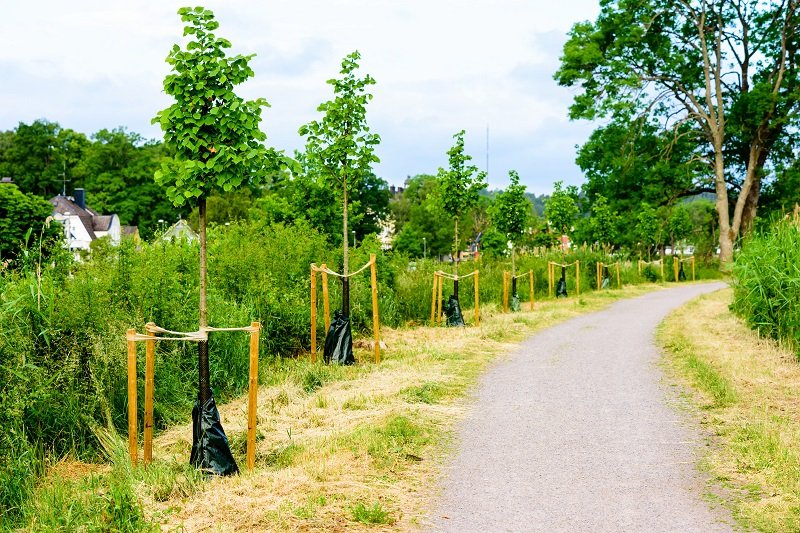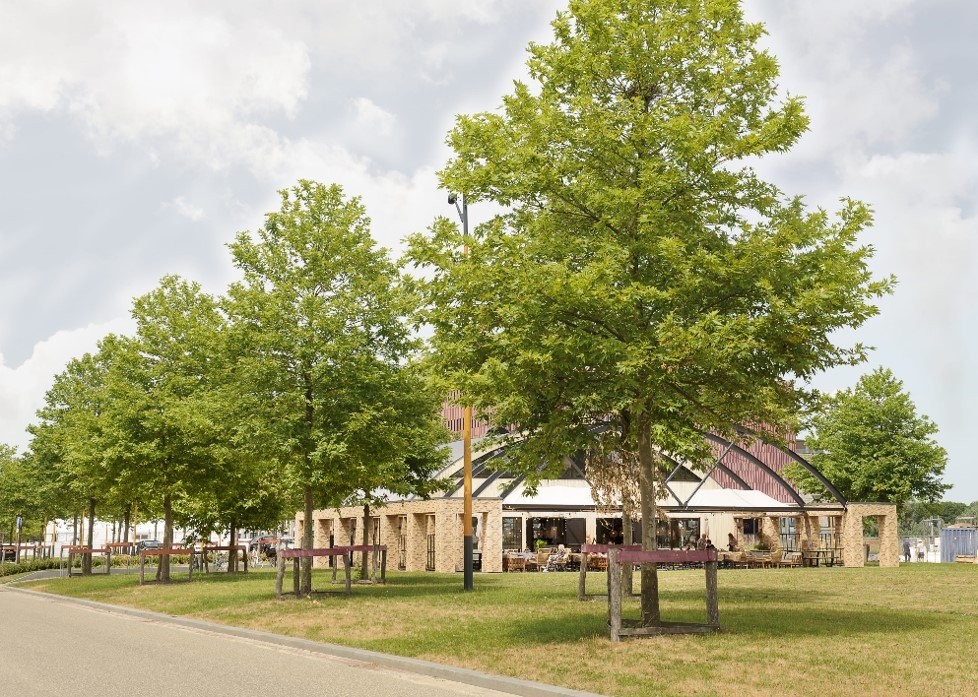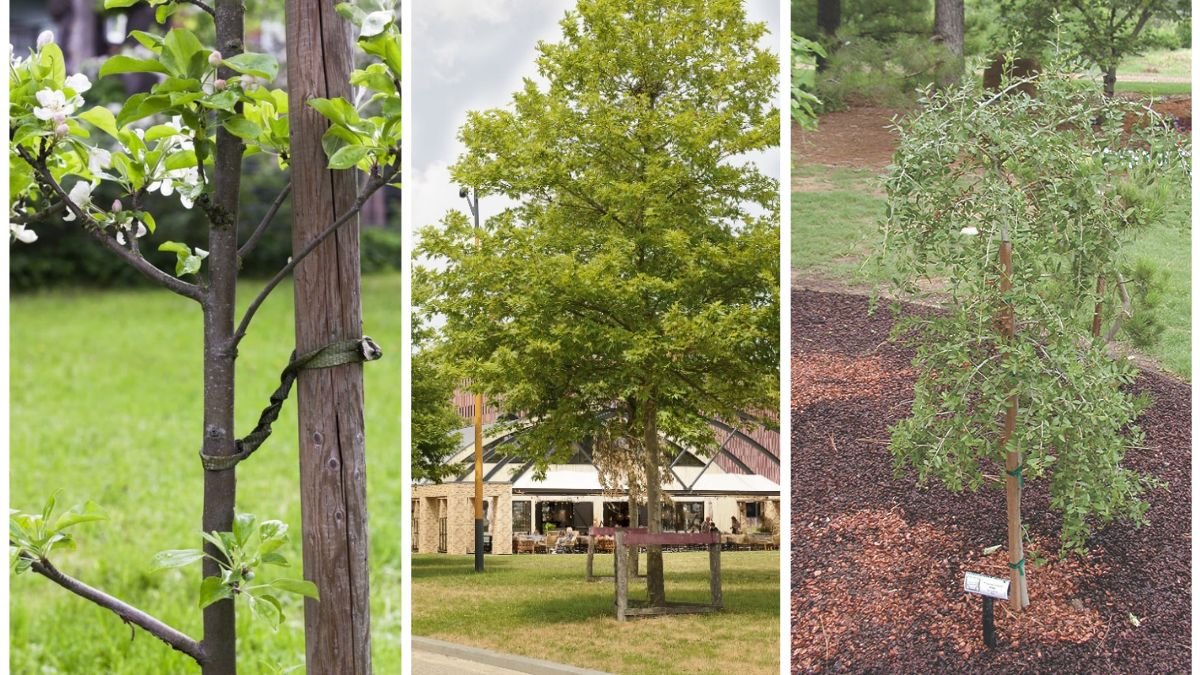A healthy, well-shaped tree is the cornerstone of a thriving garden or orchard. While mature trees often seem self-sufficient, the foundation for strong growth is laid when trees are young. Training young trees is a critical step that ensures they develop a sturdy structure, resist diseases, and produce better fruit or flowers over their lifetime. Proper training not only improves the tree’s aesthetic appeal but also enhances its long-term health and resilience.
In this article, we’ll explore the principles of tree training, why it matters, the tools and techniques involved, and a step-by-step guide to help you train young trees for optimal growth.
Why Training Young Trees Is Essential

Training young trees is much more than guiding their branches—it shapes the tree’s entire life. Here’s why it’s so important:
- Stronger Branch Structure
Young trees can develop weak or poorly angled branches. Training ensures that branches grow at the correct angles, reducing the risk of breakage under wind, snow, or heavy fruit loads. - Better Sunlight Penetration
Properly spaced and angled branches allow sunlight to reach all parts of the tree, which improves photosynthesis and promotes even growth. - Improved Air Circulation
Training encourages an open canopy, reducing the risk of fungal diseases and insect infestations by allowing better airflow. - Easier Maintenance and Harvesting
Well-trained trees are easier to prune, spray, and harvest, saving time and effort as the tree matures. - Maximizes Fruit Production
For fruit trees, training young trees to develop a balanced structure ensures better flower bud formation and higher-quality fruit.
Understanding Tree Forms

Before training a young tree, it’s important to choose a tree form. Different tree forms suit different species and garden purposes:
1. Central Leader
- Description: One main vertical trunk with evenly spaced lateral branches.
- Best for: Apples, pears, and other upright fruit trees.
- Benefits: Strong trunk, easy to prune, supports heavy crops.
2. Open Center (Vase Shape)
- Description: No central leader; 3–5 main branches spread outward, forming an open cup.
- Best for: Peaches, nectarines, and other stone fruits.
- Benefits: Allows sunlight to penetrate the center, reducing disease risk.
3. Modified Leader
- Description: A compromise between central leader and open center, with a dominant trunk and slightly more open branching.
- Best for: Fruit trees where you want a strong main trunk but better light penetration.
Tools and Supplies Needed
To train young trees effectively, you’ll need a few basic tools:
- Pruning Shears: For small branches and precise cuts.
- Loppers: For thicker branches.
- Tree Stakes and Ties: To support upright growth in young trees.
- Twine or Soft Ties: To gently guide branches without damaging bark.
- Gloves: Protect hands during pruning and tying.
Step-by-Step Guide to Training Young Trees

Step 1: Plant Correctly
- Plant the tree in a location with enough sunlight and good soil drainage.
- Avoid planting too deep; the root flare (where roots meet the trunk) should be visible above the soil line.
Step 2: Identify the Main Leader and Scaffold Branches
- For central leader trees, select the strongest vertical shoot as the main trunk.
- Identify 3–5 lateral branches that will serve as scaffold branches (main structural branches).
- Remove competing shoots that may crowd the leader.
Step 3: Stake and Support the Young Tree
- Place a stake on the windward side to prevent leaning.
- Use soft ties to loosely secure the trunk without constricting growth.
- Stakes can usually be removed after the first year, once the tree is stable.
Step 4: Prune for Structure
- Remove any dead, damaged, or crossing branches.
- Cut back overly vigorous shoots to balance the canopy.
- Maintain 18–24 inches between scaffold branches to ensure space for growth.
Step 5: Angle Branches for Strength
- Branches that grow at a 45–60 degree angle from the trunk are strongest.
- To widen narrow angles, gently tie branches downward with soft twine.
- Avoid forcing branches too flat—they may snap under weight.
Step 6: Encourage Balanced Growth
- Trim excessively long vertical shoots that compete with the leader.
- Thin dense areas to allow light penetration and airflow.
- Regularly monitor growth throughout the first 3–4 years for adjustments.
Step 7: Maintain Mulch and Water
- Mulch around the base to retain soil moisture and regulate temperature.
- Water young trees regularly, especially during dry periods.
- Avoid letting mulch touch the trunk to prevent rot.
Tips for Specific Tree Types

Fruit Trees
- Prune fruiting branches lightly in the first year to direct energy toward root development.
- Remove flowers in the first season to help the tree focus on growth rather than fruit production.
Ornamental Trees
- Focus on shape and structural integrity rather than fruit production.
- Remove low-hanging branches that could interfere with walkways or aesthetics.
Evergreen Trees
- Minimal pruning is needed, but staking may be essential in the first year.
- Maintain central leader to ensure proper vertical growth.
Common Mistakes to Avoid
- Over-Pruning
Removing too much foliage can weaken the tree and reduce photosynthesis. - Ignoring Branch Angles
Weakly angled branches are prone to breaking under wind or fruit load. - Tying Too Tightly
Constricting ties can damage bark and impede growth. Always leave room for trunk expansion. - Neglecting Regular Monitoring
Trees grow quickly—check stakes, ties, and pruning needs at least twice a season. - Planting Too Close Together
Crowded trees compete for light and nutrients, making training more difficult.
Benefits of Training Young Trees Early

Investing time in training young trees pays off for decades:
- Stronger Trunks and Branches: Reduce the risk of storm damage.
- Better Fruit Yield and Quality: Balanced canopies support larger, healthier fruit.
- Disease Resistance: Proper spacing and airflow reduce fungal infections.
- Easier Maintenance: A well-structured tree is simpler to prune, spray, and harvest.
- Aesthetic Appeal: Properly trained trees enhance garden beauty and landscape value.
Final Thoughts
Training young trees is a foundational practice that determines the long-term health, productivity, and beauty of your garden or orchard. By understanding tree forms, pruning for structure, supporting growth with stakes, and monitoring branch angles, gardeners can create trees that are not only strong and resilient but also visually striking.
Remember, the first few years are the most critical. A few hours of careful training during the early stages can prevent decades of problems and ensure that your trees thrive for generations. Whether you’re planting fruit trees for a backyard orchard or ornamental trees for a landscape, training young trees is a simple, effective investment in their future growth and strength.
